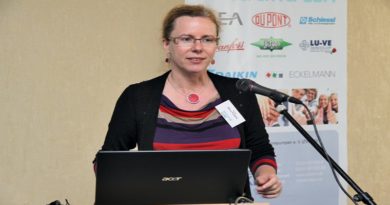How NAMAs can make projects bankable
By Leila Yim Surratt and Hannah Pitt, Center for Clean Air Policy (CCAP)
Achieving national climate goals under the Paris Agreement will require substantial low-carbon, climate-resilient investment – and most of these resources will come from the private sector. The key challenge will be to turn countries’ Nationally Determined Contributions (NDCs) into concrete actions that create the conditions necessary for climate-compatible investment. Nationally Appropriate Mitigation Actions (NAMAs) are one tool for implementing NDCs that can be used to leverage domestic and international public support to mobilize private investment.
In CCAP’s recently-released policy brief, co-authored with UNEP-DTU and NewClimate Institute, we assess how to develop NAMAs that drive private investment. The paper identifies three main dimensions that need to be addressed to promote “bankabilityâ€â€” the conditions needed for the private sector to invest profitably in low-carbon projects. These include:
Improving policy and institutional frameworks, including through policy mandates, regulations that level the playing field for low-carbon investment, and/or the development or strengthening of institutional arrangements for policy planning and implementation;
Addressing financial risks and returns, including through financial mechanisms and interventions that lower real and perceived risks and/or improve returns sufficiently to mobilize low-carbon investment; and
Identifying projects and demonstrating feasibility, including the development of an initial project or set of projects, and the identification of a larger project pipeline.
The three dimensions represent the “three legs of a stool.†While ideally, all three dimensions should be considered, a NAMA need not address all three dimensions if one or two of the conditions are already in place.
The “Three-Legged Stool†defines elements of NAMAs that make climate-friendly investments bankable.
The paper takes a look at a renewable energy NAMA in Chile, supported by the NAMA Facility, that addresses all three dimensions to attract low-carbon investments in renewable energy systems for small and medium-sized businesses. This NAMA strengthens national regulations to improve grid access, which, together with existing net metering policy, allows businesses to sell excess electricity back to the grid.
The NAMA addresses the lack of experience among investors and financial institutions in financing these energy systems through a credit guarantee fund and investment grants, as well as training and advisory services. To build a pipeline of small-scale energy systems, the NAMA provides co-financing for feasibility studies, along with technical trainings for users and service providers.
Developing countries can use this model to develop NAMAs that target barriers to private sector investment, both financial and non-financial. By creating a favorable environment for catalyzing private sector low-carbon investment, NAMAs can play an important role in achieving countries’ Nationally Determined Contributions (NDCs), and mobilizing resources in support of countries’ sustainable development goals. For funding institutions, the three dimensions can provide a framework to assess the potential of a NAMA to transform economic sectors and redirect public and private capital flows towards clean energy and low-carbon investments.




